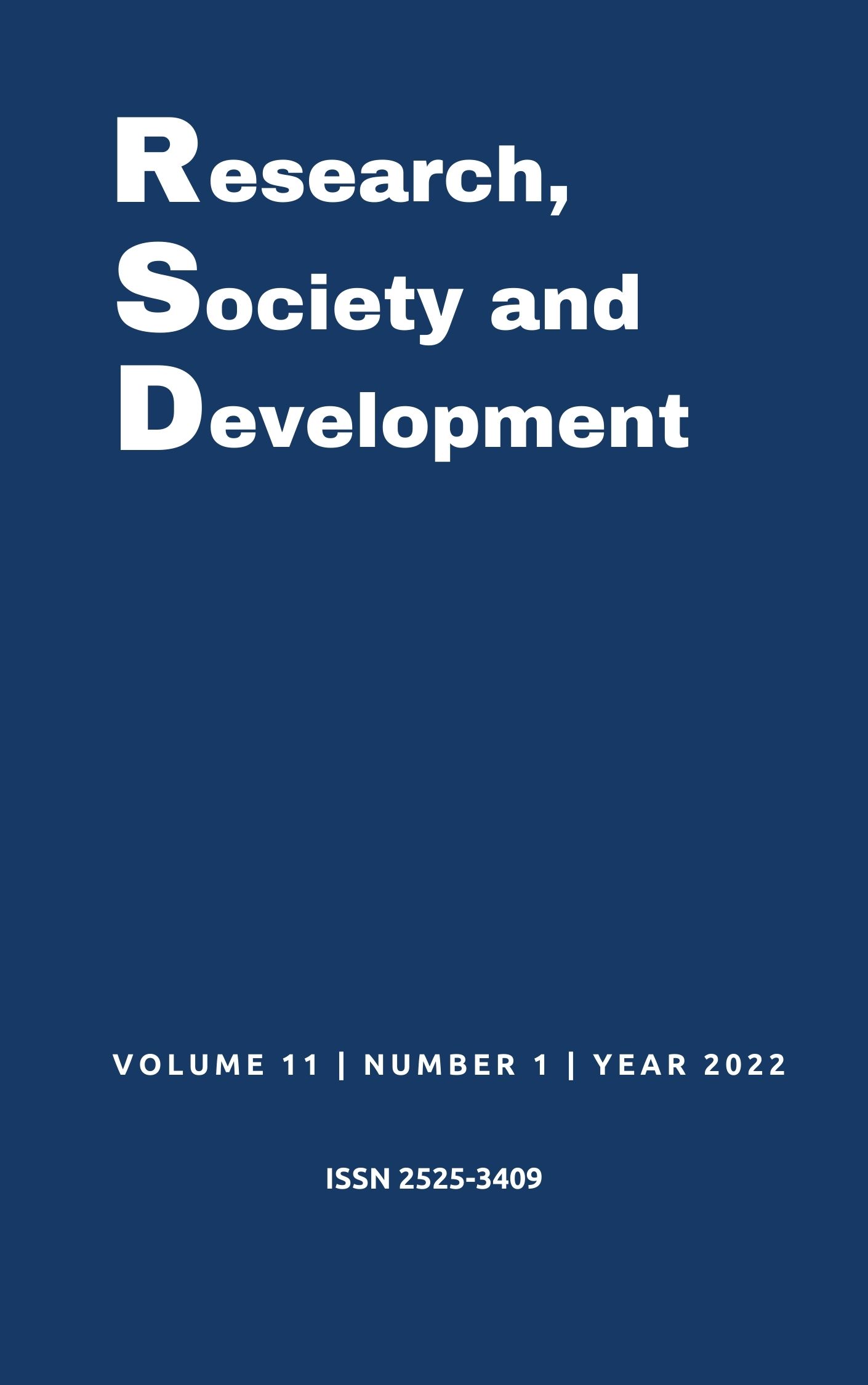Implementation of a laboratory methodology for reproducing a wind turbine with LabVIEW
DOI:
https://doi.org/10.33448/rsd-v11i1.24812Keywords:
Aerogenerator, Wind energy, LabVIEW, Electrical machines.Abstract
Seen the constant expansion of wind energy in the global energy scenario, it is necessary to present methods capable of reproducing the electromechanical effects of this source, in order to improve knowledge and technological advances. The aim of this work was to implement and evaluate the performance of the laboratory methodology for reproduction of wind turbines, using electrical machines controlled via software. For that, a platform was developed in LabVIEW for modeling and controlling the wind system, employing a direct current motor to reproduce the power extracted by the turbine, being coupled to the axis of a synchronous generator feeding a energy consuming load. The system performance study was based on the simulation of three cases, seeking to analyze parameters of constant operation, incidence of wind turbulence and behavior of the turbine control system. The results archived were gratifying by the didactic model on a reduced scale, which made it possible to verify the electromechanical effects arising from the imposed conditions. It was found that the operation of the turbine changes significantly for small wind alterations, influencing the extraction of mechanical power and the voltages generated by the system.
References
Alvarenga, E. B. de. (2012). Uma proposta laboratorial para estudos de desempenho de unidades eólicas no contexto da qualidade de energia (Dissertação de mestrado). Universidade Federal de Uberlândia, Uberlândia, MG, Brasil.
Bonelli, A. F. (2010). Modelagem e simulação de unidade eólica para estudos de indicadores de qualidade da energia elétrica (Dissertação de mestrado). Universidade Federal de Uberlândia, Uberlândia, MG, Brasil.
Carvalho, B. C. (2006). Desenvolvimento de modelo computacional de sistemas eólicos utilizando geradores síncronos para estudos de desempenho no contexto da qualidade da energia elétrica (Tese de Doutrado). Universidade Federal de Uberlândia, Uberlândia, MG, Brasil.
Chapman, S. J. (2013). Fundamentos de máquinas elétricas (5a ed.). (Anatólio Laschuk, Trad.). Porto Alegre: AMGH.
Fadigas, E. A. F. A. (2011). Energia eólica. Barueri: Manole.
Gao, L., & Luo, Y. (2009). Simulation of Imitation of the Characteristics of Wind Turbine Based on DC Motor with Matlab. International Conference on Sustainable Power Generation and Supply, 1-5, doi: 10.1109/SUPERGEN.2009.5348190.
Lin, B., Xiaofeng, L., & He, X. (2011). Measurement system for wind turbines noises assessment based on LabVIEW. Measurement: Journal of the International Measurement Confederation, 44(2), 445-453.
Kalmikov, A. (2017). Wind power fundamentals. In T. M. Letcher (Org.), Wind energy engineering: A handbook for onshore and offshore wind turbines (Cap.2, p. 17-23). London: Elsevier.
Karzov, Z., & Milenov, V. (2015, Outubro). Wind turbine emulator with dc motor. International Conference on Electrical Machines, Drives and Power Systems ELMA, Varna, Bulgaria, 14.
Mendes, V. F. (2009) Avaliação do comportamento de um sistema de conversão de energia eólica utilizando gerador de indução duplamente excitado durante afundamentos de tensão equilibrados e desequilibrados (Dissertação de mestrado). Universidade Federal de Minas Gerais, Belo Horizonte, MG, Brasil.
Nascimento Junior, G. C. do. (2013). Máquinas elétricas: Teoria e ensaios (4a ed.). São Paulo: Érica.
Neto, A. S. (2005). Análise e controle de centrais eólicas a velocidade variável utilizando Atpdraw (Dissertação de mestrado). Universidade Federal de Pernambuco, Recife, PE, Brasil.
Parreiras, T. M., & Silva, S. R. (2012, Maio). Distorções harmônicas geradas por um parque de turbinas eólicas. Simpósio Brasileiro de Sistemas Elétricos, Goiânia, GO, Brasil, 4.
Silva, J. R. C. da. (2014). Otimização da posição de aerogeradores em parque eólico (Dissertação de mestrado). Universidade de Brasília, Brasília, DF, Brasil.
Silva, K. F. da. (2006). Controle e integração de centrais eólicas à rede elétrica com geradores de indução duplamente alimentados (Tese de doutorado). Escola Politécnica da Universidade de São Paulo, São Paulo, SP, 2006.
Slootweg, J. G., Polinder, H., & Kling, W. L. (2003). Representing wind turbine electrical generating systems in fundamental frequency simulations. Ieee Transactions On Energy Conversion, 18(4), 516–524.
Travis, J., & Kring, J. (2006) Labview for everyone: Graphical programming made easy and fun (3a ed.). Crawfordsville: Prentice Hall.
Umans, S. D. (2014). Máquinas elétricas de Fitzgerald e Kingsley (7a ed.). (Anatólio Laschuk, Trad.). Porto Alegre: AMGH.
Witherspone, I. Z. (2014). Comparison between dSPACE and NI systems based on real-time intelligent control of a teleoperated hydraulic servo system (Tese de doutorado). Lappeenranta University of Technology, Lappeenranta, Finlândia.
Xavier, G. L. (2012). Avaliação de desempenho da estratégia de representação laboratorial de turbinas eólicas utilizando motores de indução controlados (Dissertação de mestrado). Universidade Federal de Uberlândia, Uberlândia, MG, Brasil.
Downloads
Published
Issue
Section
License
Copyright (c) 2022 Leonardo Corrêa Caixeta; Victor Henrique da Cunha Faria; Gaspar Eugênio Oliveira Ramos

This work is licensed under a Creative Commons Attribution 4.0 International License.
Authors who publish with this journal agree to the following terms:
1) Authors retain copyright and grant the journal right of first publication with the work simultaneously licensed under a Creative Commons Attribution License that allows others to share the work with an acknowledgement of the work's authorship and initial publication in this journal.
2) Authors are able to enter into separate, additional contractual arrangements for the non-exclusive distribution of the journal's published version of the work (e.g., post it to an institutional repository or publish it in a book), with an acknowledgement of its initial publication in this journal.
3) Authors are permitted and encouraged to post their work online (e.g., in institutional repositories or on their website) prior to and during the submission process, as it can lead to productive exchanges, as well as earlier and greater citation of published work.


